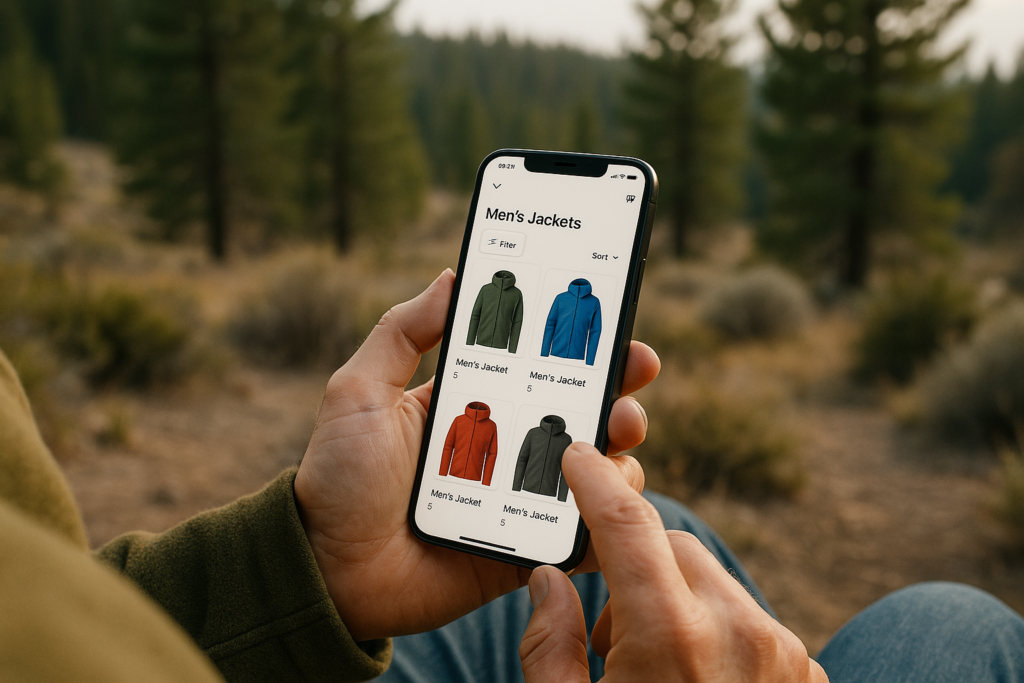Decoding users’ search intent by paying attention to what people type into the search bar can help your content stand out and drive traffic to your site. Simply including keywords on your website won’t do you any favors if the content isn’t written with the users in mind. Google is quick to notice poor content that has little value for users, so the terms and content you offer must be appropriate (aka, relevant, interesting, and well-written) for the audience, to pass search engines’ sniff tests. When you understand how to home in on search intent and keyword value, you can satisfy the search engines and the searchers.

Understanding Keyword Intent
The reason behind a searcher’s query—which could include a product, service, resource, or answer—is called keyword intent. You’ll also hear this called search intent or user intent, but these terms all boil down to the same thing: what web searchers are looking for. Search engines use whatever words the searcher plugs into the search bar to decide what makes the most relevant result. The more closely your content matches potential customers’ intent, the better your position on the Search Engine Results Page (SERP).
Why Search Intent Is Important
If you’ve ever clicked on a link on the SERP only to be surprised (not pleasantly so) by the page you land on, then you’ve seen poor search intent in action. When potential customers land on your website, the page they see needs to be aligned with the keywords that got them there or they’ll bounce. Someone searching “beeswax candles” might be looking to buy them, make them, or learn how to trim the wicks. When you correctly identify people’s search intents and offer content to match, Google knows which pages to serve to meet searchers’ expectations and you become a valued resource for information, services, or products for new and existing customers.
Types of Search Intent
Search intent can be navigational, informational, commercial, or transactional; each signals what the searcher is trying to accomplish (make a purchase, learn something, reach a website, find a product, and so forth). When your company website offers content that aligns with each search intent type, you can reach consumers with a range of intentions.
Different user intents are tied to different phases of the buying cycle (awareness, consideration, preference, and purchase). Artificial Intelligence tools often lay claim to broad, top-funnel queries, offering generic, stripped-down information, which can be useful, but can also be boring. Optimizing your content to capture bottom-funnel leads can set your site apart and give readers interesting, expert information on the topic they’re searching.
Identifying Users’ Search Intents
What are your customers looking for when they land on your website? Answering this can point you to the search intents that resonate with your audience. Keywords like “how,” “best,” “for sale,” and “near me” can reveal what users hope to accomplish, whether it is finding a product comparison or making a reservation at a local restaurant. Identifying user intent allows you to satisfy their search queries with high-quality resources better than AI-powered results, and provide contact points during each phase of the buyer’s journey.
The screenshot above shows the search intent for keywords related to beeswax. If you’re having a hard time turning readers into customers, it’s time to take a look at this list and see what your site is missing. Targeting additional transactional keywords, shown as (T) above, can help capture the audience that’s ready to buy, and incorporating more informational (I) terms in blog posts can show your customers you’re an authority on the topic and help you make a name for yourself as a resource. To do this successfully, you’ll first need to understand the four types of keyword intent and who these searchers are.
Informational Keyword Intent
As the name suggests, informational keywords help searchers learn something, such as a skill, insights about a place or person, or a recipe. Informational user intent relates to the awareness and consideration phases of the buying journey when searchers are gathering resources and gaining an understanding of a process or item. This is where your educational, knowledge-based content shines.
As you can see on the list of informational intent keywords for “beeswax” below, these terms are often formatted as questions (who, what, where, when, why), but not exclusively.
Targeting only informational keywords won’t do much for your bottom line because searchers using these terms aren’t ready to buy yet. But that doesn’t mean you shouldn’t create content to satisfy these queries. Giving people new to the world of beeswax (or whatever is the focus of your site) worthwhile information as they check out this new hobby builds a relationship and makes your site a trusted source. Since you’ve fostered these shoppers throughout their journey, they are likely to become loyal, repeat customers.
Navigational Keyword Intent
People in the consideration phase of the buying cycle use navigational keywords to route directly to a specific website or login page. These shoppers have narrowed their decision to a specific product, such as ‘beeswax wrap’ or ‘big dipper beeswax’ shown above.
If your website mentions your brand name, you’re on your way to optimizing for navigational searches, but that’s not all you can do. Adding content to support specific navigational searches helps your site make a strong case to be shown at the top of the results page. And when you do this well, you could earn SERP features, as shown above. The SERP for ‘Bee Bella’ navigational query features subpages with product highlights, shopping, and company information to make it easy for the searcher to find these popular Bee Bella topics likely to match their intent.
Commercial Keyword Intent
Customers searching online with the intention of making an eventual purchase use commercial keywords. Examples of commercial keywords for ‘beeswax’ are shown below; as you can see, these can include branded and unbranded terms.
Customers using commercial terms are in the consideration or preference stage, meaning they only need a nudge to get them to the checkout. Optimizing existing product copy to include details to assist shoppers with making informed decisions is one way to help commercial searchers convert, and creating content to compare ‘beeswax furniture polish’ types or provide beeswax candle reviews also helps commercial searchers commit.
The SERP shown below will give you an idea of the content that gets second looks for searchers using commercial keywords. Creating content for these terms lets you show off your chops on a topic because these searchers are looking for product lists, articles with pros and cons, and direct comparisons.
Transactional Keyword Intent
Customers who intend to buy a product or subscribe to a service use transactional keywords that are dead giveaways for their intent, and these search terms often include calls to action like, buy, purchase, see, order, reserve, and download. Long-tail keywords, such as Organic Beeswax Peppermint Lip Balm, can also help traffic connect with a specific product. Optimizing pages with transactional keywords can steer them to a service trial or purchase page quickly. The Bee Bella page for lip balm below includes three CTAs to encourage customers to convert, along with product details to answer any last-minute questions.
Keyword Search Value
Assessing a keyword’s search value will tell you the term’s potential for driving traffic and resonating with your audience. If you’re tempted to target terms by search volume alone, fight the urge and take a more nuanced approach by considering the value the terms bring to your users.
Intent-Based Keyword Research
The process of assigning search value to keywords should consider customers’ intentions and prioritize terms that are more likely to contribute to marketing objectives, whether that’s selling, offering a service, or providing advice on topics. Selecting terms by search value requires looking beyond the numbers shown on keyword research tools to make informed decisions.
Metrics for assessing keyword value include:
- Customer Intent – What terms are they searching and what are they looking for?
- Search Volume – How many people search for the keyword per month?
- Keyword Difficulty – How many other websites target this term?
- Search Trends – Is the volume stable, growing, or declining?
- Seasonality – Does the volume fluctuate depending on the time of the year?
- Competition – What keywords do competitors use?
When you’re ready to dive into intent-based research to plan content, start with these three basic steps:
1. Brainstorm Potential Keywords
Keyword research tools, such as Google Keyword Planner, SEMrush, and Ahrefs offer keyword intent information plus other metrics, such as the ranking difficulty and search trends, to help you home in on potential keywords. You can also use tech-free SEO research methods to identify additional terms.

2. Analyze Search Engine Results Pages
Analyzing the SERPs for each potential keyword can help you pinpoint which intent is dominant and what kind of content will align with it best. Expand the knowledge box and People Also Ask areas of the SERPs to see what content competitors are offering and which topics will showcase your expertise. Pay attention to what content formats are used in the SERPs to help you decide when videos, infographics, or a calculator tool will best meet searchers’ needs.
3. Filter Keywords by Intent and Value
Once you’re armed with a list of primary and secondary keywords and the content ideas you’ll use to represent these terms on your website, it’s time to prioritize. Tackling it all can be difficult without professional marketing help. Instead of over-extending yourself, plan which content you will realistically rank for and let that drive your calendar. By focusing on the intent and potential search value, your next how-to article or pros and cons list will capture an audience that can result in revenue for you, and valuable resources for them.
Once the shiny new content is in play, it’s time to monitor, measure, and adapt your strategy to stay on top of the competition. If you need help creating a keyword strategy that gets results, contact Eight Oh Two today. Our marketing team offers experience, best-in-class technology, and the very best in human intelligence to capture new leads with intent-focused, results-driven content.












